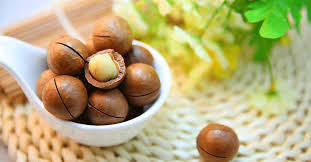Tech
The Origins and Cultural Journey of Macadamia Nuts

Deep in the subtropical rainforests of eastern Australia, a remarkable tree species evolved over millions of years, producing what would eventually become one of the world’s most prized nuts.
The macadamia nut, known for its rich, buttery flavor and exceptional nutritional profile, has a fascinating history that spans indigenous culture, colonial discovery, and global agricultural innovation.
Table of Contents
Ancient Origins and Indigenous Heritage
The macadamia tree evolved in the ancient rainforests along Australia’s eastern coast, primarily in what is now Queensland and New South Wales. Indigenous Australian peoples, particularly the Bundjalung Aboriginal people, have known and utilized these nuts for thousands of years, calling them “Kindal Kindal” or “Gyndl Gyndl.”
These communities not only gathered the nuts for food but also used them in trade between different groups, making macadamias one of the few Australian native foods that were commercially traded before European settlement.
The Aboriginal people developed sophisticated methods to harvest and process these nuts, including specific techniques for cracking their extremely hard shells.
They would gather the nuts from the forest floor and use specially shaped stones to crack them open, passing this knowledge down through generations. These nuts were considered a delicacy and often featured in important ceremonial gatherings.
Scientific Discovery and Naming
The Western world’s introduction to macadamia nuts came in the 1850s when European botanists began exploring and documenting Australia’s flora. The genus was named after Dr. John Macadam, a prominent Scottish-Australian scientist and politician who served as the secretary of the Philosophical Institute of Victoria.
Two species were initially identified: Macadamia integrifolia (the smooth-shelled macadamia) and Macadamia tetraphylla (the rough-shelled macadamia).
Ferdinand von Mueller, the Victorian Colonial Botanist, officially described and named the genus in 1857. The scientific community’s interest in these nuts grew as they discovered their unique properties, including their extremely hard shell and high oil content.
Journey to Hawaii and Global Cultivation
The most significant chapter in macadamia’s commercial history began in 1881 when William Purvis introduced the first macadamia trees to Hawaii’s Big Island. These trees were planted for reforestation purposes, but their potential as a food crop was soon recognized. The mild Hawaiian climate and volcanic soils proved ideal for macadamia cultivation.
In 1922, Ernest Van Tassel established the first commercial macadamia plantation in Hawaii and founded the Hawaiian Macadamia Nut Company. The University of Hawaii’s agricultural program played a crucial role in developing improved varieties and growing techniques throughout the 1920s and 1930s, creating the foundation for modern macadamia cultivation.
Modern Production and Global Impact
Today, while Australia remains the native home of macadamia nuts, they are cultivated in various tropical and subtropical regions worldwide. Hawaii’s early lead in commercial production has been surpassed by other regions, with major producers now including:
- Australia (returning to prominence as the world’s largest producer)
- South Africa
- Kenya
- Guatemala
- Brazil
The development of modern processing techniques and equipment has transformed macadamia production from a labor-intensive process to a sophisticated agricultural industry.
Specialized harvesting machines, processing facilities, and quality control measures ensure consistent, high-quality nuts reach global markets.
Cultural and Economic Significance
Macadamia nuts have evolved from an indigenous food source to a global agricultural commodity worth billions of dollars annually. Their journey represents a remarkable example of how traditional knowledge, scientific discovery, and agricultural innovation can combine to create a sustainable and valuable food resource.
These nuts continue to hold cultural significance in their native Australia, where efforts are being made to recognize and honor their Aboriginal heritage. Meanwhile, in Hawaii, they have become deeply embedded in the local culture and economy, symbolizing the islands’ agricultural diversity and innovation.
Today, macadamia nuts are celebrated not only for their distinctive taste but also for their nutritional benefits, including high levels of healthy monounsaturated fats, essential minerals, and antioxidants.
Their journey from Australian rainforest to global popularity serves as a testament to their unique qualities and the ingenuity of those who have cultivated them throughout history.

-

 Health6 years ago
Health6 years agoAdvantages and Disadvantages of Milk
-

 Tech4 years ago
Tech4 years ago6 Tips to Improving E-Commerce Websites
-

 Home6 years ago
Home6 years agoAdvantages and Disadvantages of Village Life in Points
-

 Travel5 years ago
Travel5 years agoAdvantages and Disadvantage of Travelling
-

 Sports4 years ago
Sports4 years agoThe benefits of playing an online live casino
-

 Tech6 years ago
Tech6 years ago10+ Advantages and Disadvantages of Mobile Phones in Points
-

 Tech5 years ago
Tech5 years agoEssay on Advantages and Disadvantages of Offline Shopping
-

 Tech5 years ago
Tech5 years ago8+ Advantages and Disadvantages of Motorcycle |Having Bike